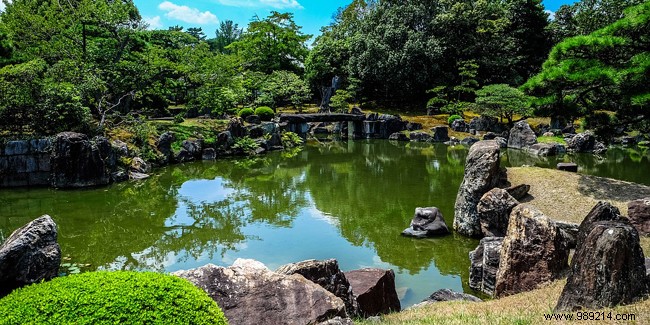
In Japan, garden design is an important and respected art. Unlike Western gardens which favor a geometric composition, Japanese gardens give an interpretation and an idealization of nature by striving to limit artifice. It was under the influence of Buddhism that the first real gardens were designed. Historically, it was on the island of Honshù, the large central island of Japan, that these gardens appeared, shaped according to the temperate and humid climate of this place with four very distinct seasons and enriched by the great diversity of the flora that was present there.
This island, made up largely of volcanic massifs traversed by narrow valleys, led to the use of natural styles, adapted to the contours of the terrain, and not seeking to impose a grand geometric design on the gardens. They are therefore very inspired by mountain landscapes (torrents, waterfalls, steep slopes and pastures) and jagged coasts, so many natural motifs in all their forms that can be found in different styles of gardens.
We can actually consider that there are three main categories of Japanese gardens. There are the gardens that represent nature in miniature, the "tea gardens » of extreme simplicity including landscaped paths leading to a tea house and finally the « dry gardens or “zen intended for meditation. The latter, very representative of Japanese gardens, appeal to a more abstract representation by using unusual materials to symbolize elements of nature, such as sand or gravel to represent the sea or rocks, sometimes surrounded by moss, which make office of mountains, waterfalls or boats.
The garden is often created around a building (a residence or a temple) from which it is intended to be seen. Beyond the specific architecture of the building, and without looking for the aesthetic rules that govern their layout, we can see that a large number of typical elements are found in Japanese gardens, whether real or symbolic.
They can therefore be composed of rocks, chosen for their shape, color, size and texture, a tea room or a pavilion, sand or gravel on which patterns are drawn, dirt roads , gravel or stones, a border materialized by a hedge, a palisade or a wall of traditional construction, decorative elements such as water basins, lanterns, statues or pagodas. Water is very present in these gardens whether in the form of ponds, waterfalls, rivers or a central lake which is often overlooked by a bridge that leads to an island; The bodies of water frequently contain carp.